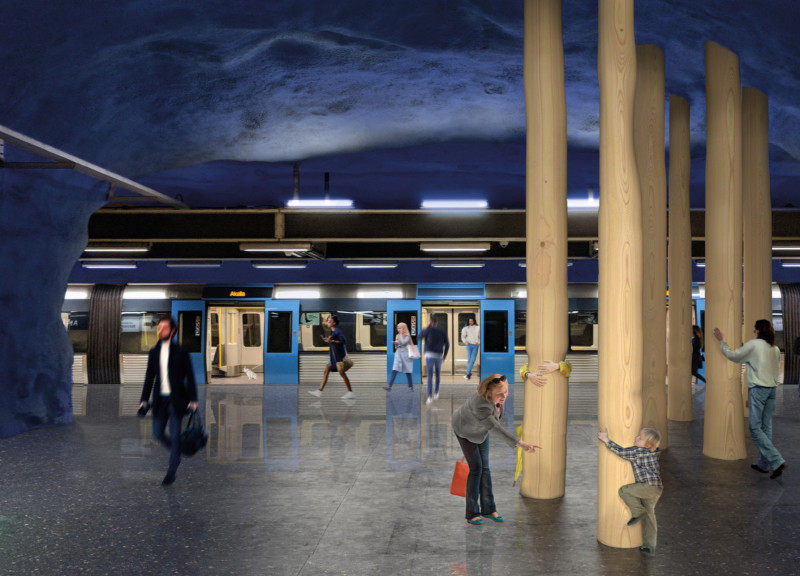5 key facts about this project
The "Hug a Tree" installation in Stockholm is located within a subway station and aims to enhance the experience of commuters. By integrating an unexpected grove of trees into this busy public space, the design encourages people to interact with their environment in a new way. The project serves as a momentary pause in the daily hustle, inviting users to reflect and connect with their surroundings as they travel through the station.
Materials
The main material used is solid Swedish pine. This choice is important for creating a warm and inviting atmosphere. The tactile qualities of the wood provide a comforting element that contrasts sharply with the hard surfaces typically found in urban transit areas. The trunks are equipped with a hydronic heating system, which adds to the experience by making them feel warm to the touch, similar to the sensation of freshly sanded wood.
Spatial Organization
The arrangement forms a "room within a room," creating a comfortable, intimate space amid the expansive environment of the subway station. This design creates contrast between the larger, open areas and the smaller, more inviting grove. It encourages a slower pace, prompting commuters to engage in the installation rather than just pass by. The trees function as focal points that draw attention and invite exploration.
Human Interaction
A central focus of the design is to promote interaction. The tree trunks are shaped to allow for hugging, with careful consideration given to height and arm length. This helps ensure that people of different sizes can connect comfortably with the trees. The act of embracing the trunks encourages a sense of community, inviting moments of connection in a space that is usually about transit and efficiency.
The visual impact and sensory details of the design come together to challenge the ordinary feel of the subway. Through the thoughtful arrangement and warm material choices, the installation stands as a reminder of the importance of human experiences even in transit environments.



















































